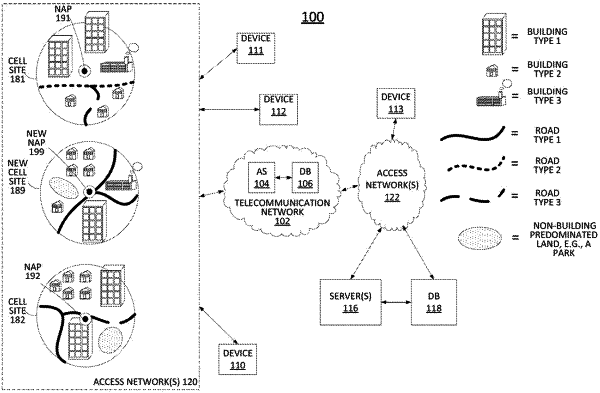| CPC H04W 16/18 (2013.01) [G06N 20/00 (2019.01); H04W 24/08 (2013.01)] | 20 Claims |

|
1. A method comprising:
obtaining, by a processing system including at least one processor, usage volume information for a plurality of endpoint devices for at least one network access point of a network, wherein for each of the plurality of endpoint devices the usage volume information comprises a total usage volume via the network in a given time period and a usage volume via the at least one network access point in the given time period;
determining, by the processing system, at least one earning value of the at least one network access point in the given time period based upon a summation of an earning metric of each of the plurality of endpoint devices for the at least one network access point, wherein the earning metric comprises for each of the plurality of endpoint devices: a total earning for the network from the endpoint device in the given time period times a ratio of the usage volume via the at least one network access point in the given time period divided by the total usage volume via the network in the given time period;
training, by the processing system, a prediction model to predict an earning value of a new network access point, wherein the prediction model is trained based upon geospatial features of the at least one network access point as predictor factors of the at least one earning value of the at least one network access point; and
determining, by the processing system, a predicted earning value of the new network access point in a time interval via the prediction model, wherein the determining the predicted earning value comprises applying geospatial features of the new network access point as inputs to the prediction model and obtaining the predicted earning value as an output of the prediction model.
|